I have good news and bad news: The Strawberry Guava is about to blossom. The bad news is that if you live in some areas of Florida, the Caribbean, or Hawaii — especially Hawaii — that invasive species will be producing more seeds and taking over more land.
It took several seasons of my Strawberry Guava fruiting for me to learn to time it just right. The fruit starts out green, then turns mottled with green and red and finally a dull red. And they go, in taste, from not palatable to sweet/tart then just sweet. Plus the fruit’s skin transforms from tough to hard to very soft. At the latter stage, if one has a bit of imagination they can taste slightly strawberry-esque. Personally I think they taste like Strawberry Guava. Why folks have to name them like some other fruit is beyond me. But that’s not the real issue. The real issue, besides it being an invasive species and naturalized, is worms, larvae really.
When green, the skin is too tough for most flies to lay their eggs through. But when ripening, they are quite soft. If you let your strawberry guava fruit fully ripen before you eat them, you will get a lot of larvae in each fruit. Depending upon your turn of mind, that might be free protein or disgusting. While the seeds are edible, they are quite hard so teeth beware. Also the leaves can be used to make a nice tea.
 Pregnancy and wild plants. In his book The Green Pharmacy James Duke, PhD, lists several wild edible plants to be avoided while pregnant. They are: juniper berries, mugwort, , mayapple, and evening primrose. Add to them Southern Wax Myrtle as well. There are also quite a few herbs to avoid as well including barberry root, cascara sagradea, feverfew, pokeroot, rue, senna, southernwood, tansy, thuja, mountain mint and St. Johns Wort. Carrot seed, incidentally, should not be consumed if you want to conceive. It has a chemical that prevents fertilized eggs from implanting.
Pregnancy and wild plants. In his book The Green Pharmacy James Duke, PhD, lists several wild edible plants to be avoided while pregnant. They are: juniper berries, mugwort, , mayapple, and evening primrose. Add to them Southern Wax Myrtle as well. There are also quite a few herbs to avoid as well including barberry root, cascara sagradea, feverfew, pokeroot, rue, senna, southernwood, tansy, thuja, mountain mint and St. Johns Wort. Carrot seed, incidentally, should not be consumed if you want to conceive. It has a chemical that prevents fertilized eggs from implanting.
Recently added article: Dad’s Applewood Pipes, Edible Flowers Part Twenty, Junipers. Updates: Nettles can be used for allergies, Horsemint for memory loss, Dog liver is toxic,
Is all Seaweed edible? No, but most of them are. Two non-edibles one might encounter in North America are Desmarestia ligulata (pictured left) particularly found on the northwest coast, and Cyanobacteria (blue-green algae) found in the Caribbean linked to ciguarera poisoning. D. ligulata accumulates hydrochloric acid, making it non-edible. However, they do use the acid for pickling. As for the alga it is why one is not supposed to eat barracuda any longer than your forearm. They think the fish collects some chemical in the alga making it toxic when an adult. So if in warm seas, avoid blue-green blobs and if in cold water a seaweed burns you, have D. ligulata. There might be some toxic red seaweed in the Southseas as well. But other than those two mentioned the seaweed found around North America should be edible.
Since most seaweed is edible, and nutritious, why isn’t it consumed more often? Taste and texture. I’ve collected sargassum here in Florida and entertained several ways to prepare it. Semi-drying and frying isn’t too bad but… bladderwrack is better, sea lettuce better still. Not surprisingly most land animals including birds don’t like seaweed. However, it does make good mulch and fertilizer. So while one may not use it directly in the diet it can still help sustain you with uses in the garden. Here are some of my articles on seaweed: Bladderwrack, Caulpera, Codium, Gracilaria, Sargassum, Sea Lettuce, and tape seagrass.
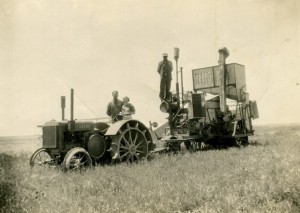 The question was asked nearly a century ago but began in earnest some 40 years later. The United States entered WWI in 1917 and got out in early 1919. That same year lyricists Joe Young and Sam Lewis with song writer Water Donaldson wrote “How Ya Gonna Keep ‘Em Down On The Farm.” It was, as we say today, a smash hit. If you want to hear a jazzy dixieland version of the same song recorded in 1967 by Benny Goodman click here. The relevant verse is:
The question was asked nearly a century ago but began in earnest some 40 years later. The United States entered WWI in 1917 and got out in early 1919. That same year lyricists Joe Young and Sam Lewis with song writer Water Donaldson wrote “How Ya Gonna Keep ‘Em Down On The Farm.” It was, as we say today, a smash hit. If you want to hear a jazzy dixieland version of the same song recorded in 1967 by Benny Goodman click here. The relevant verse is:
How ya gonna keep ’em down on the farm after they’ve seen Paree’? How ya gonna keep ’em away from Broadway, jazzin’ around and paintin’ the town. How ya gonna keep ’em away from harm, that’s a mystery. They’ll never want to see a rake or plow. And who the deuce can parleyvous a cow? How ya gonna keep ’em down on the farm after they’ve seen Paree’?
 Some historians argue that WWI and WWII were actually just one war with a 20-year recess. Whether two wars or one, they or it made a huge difference in how Americans lived. Prior to WWI America was a rural country. Most folks lived on farms. After WWII came suburbia, housing developments, and lawns, the largest crop in America today. One might argue that WWI showed Americans there was a life off the farm — as the song suggests — and the boon after WWII showed them how to move off the farm permanently. Interestingly two related issues made their appearance then.
Some historians argue that WWI and WWII were actually just one war with a 20-year recess. Whether two wars or one, they or it made a huge difference in how Americans lived. Prior to WWI America was a rural country. Most folks lived on farms. After WWII came suburbia, housing developments, and lawns, the largest crop in America today. One might argue that WWI showed Americans there was a life off the farm — as the song suggests — and the boon after WWII showed them how to move off the farm permanently. Interestingly two related issues made their appearance then.
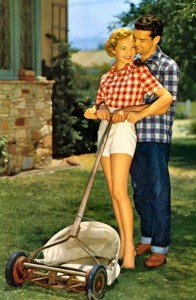 Prior to WWI nearly everyone raised their own food, and nearly everyone foraged for food. But in the boon after WWII people really did move off the farm. When people did move they separated themselves from their food. Foraging died out because the know-how was not passed on and their farming knowledge became a twisted echo of the past. It was difficult for folks to stop growing things after doing it for so long. But, instead of raising food in suburbia they choose to raise lawn grass and ornamentals, most of them toxic. It was almost a collective cultural statement of arriving by saying “I don’t have to forage or grow food anymore. I’m so modern I can raise non-edible plants.”
Prior to WWI nearly everyone raised their own food, and nearly everyone foraged for food. But in the boon after WWII people really did move off the farm. When people did move they separated themselves from their food. Foraging died out because the know-how was not passed on and their farming knowledge became a twisted echo of the past. It was difficult for folks to stop growing things after doing it for so long. But, instead of raising food in suburbia they choose to raise lawn grass and ornamentals, most of them toxic. It was almost a collective cultural statement of arriving by saying “I don’t have to forage or grow food anymore. I’m so modern I can raise non-edible plants.”
Millennia of knowledge on how to forage was allowed to wither and centuries of experience on how to raise food was diverted into raising grass and ornamentals. America became Mom, Dad, two kids, a dog, a station wagon and a lawn. Historically lawns were uncommon. But between the world wars what may have tipped the balance was the invention of the motor-powered lawn mower. It proliferated lawns which until then were cut by hand or by sheep or goats as the White House lawn was kept. It also made a big difference to trees. To listen to an editorial I wrote and read for National Dutch Radio (in English) about lawns and trees click here.
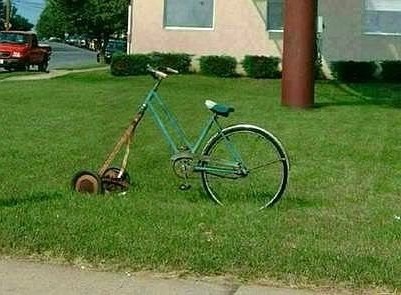 I have several neighbors who would be successful and well-fed farmers if their energies were put into an edible landscape rather than decapitated grass and poisonous flowers. One neighbor of mine has had an insect problem with his lawn for several years. Much time and money has been spent to fight the invertebrate invasion. It looks like this year he finally won and has to show for it… a patch of grass. And did you know 60% of drinkable water in suburbia goes to watering lawns? Or that millions of gallons of gasoline and oil are spilt every year while maintaining those lawns? Studies show lawn slaves use 10 times more herbicides and fertilizer than vegetable farmers. Facts I point out when I am asked if lawn grass is edible.
I have several neighbors who would be successful and well-fed farmers if their energies were put into an edible landscape rather than decapitated grass and poisonous flowers. One neighbor of mine has had an insect problem with his lawn for several years. Much time and money has been spent to fight the invertebrate invasion. It looks like this year he finally won and has to show for it… a patch of grass. And did you know 60% of drinkable water in suburbia goes to watering lawns? Or that millions of gallons of gasoline and oil are spilt every year while maintaining those lawns? Studies show lawn slaves use 10 times more herbicides and fertilizer than vegetable farmers. Facts I point out when I am asked if lawn grass is edible.
As I say in my NDR editorial, lawns are not green. Fortunately zoning regulations — prodded on by shortages of drinking water — are now changing. Local regulations are changing, but only slowly and often after law suits. But who knows, perhaps in the not too distant future if you want a patch of decapitated grass you will have to pay a lawn tax, by the square foot, rounded up, of course.
If you think Home Owner Associations are bad then Code Enforcment Boards aren’t far behind. This one in Tulsa, Okalahoma, does not care for the rule of law. Without legal cause they eliminated an edible landscape. HOA and CEB remind me that some folks have dictator personalities. To read the story click here.
And if that is not enough, here’s another one mentioned in the Green Deane Forum. In this case a man is being harrassed by city officials who have no legal grounds to do so. Click here and or here.
Classes This Week:
Saturday, June 23rd, Jervey Gantt Recreation Complex, 2390 SE 36th Ave., Ocala, FL, 34471, 9 a.m.
Sunday, June 24th, Lake Woodruff National Wildlife Refuge, 2045 Mud Lake Road, DeLeon Springs, FL.9 a.m.
To donate to the Green Deane Newsletter click here.

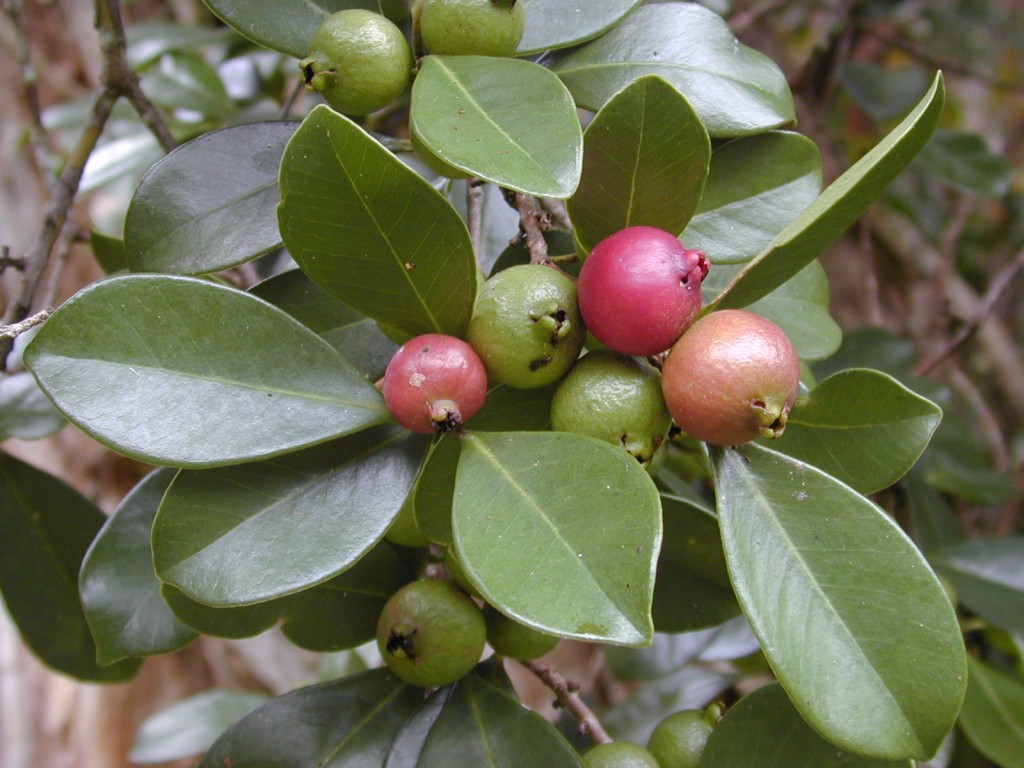
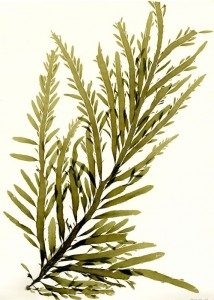

It’s a good thing to remind folks not to look too closely at the strawberry guava, if they bite it in half. They may find fruit fly larvae. Of course, the larvae also taste like strawberry guava …
DELICIOUS!
Tim
Are you sure they don’t taste like chicken? 😉
Wonderful ~ no; excellent article. Can’t help but desire one of those push mowers with maybe, an adult sized three wheeled bicycle. I’m trying to grow herbs and edible flowers here in my landscaping so that I won’t have to waste gasoline and spew pollutants on my fruits, veggies and that of my neighboring gardens as well. Thanks for showing the facets of these issues, varying. I hope these will be well thought through fairly and responsibly, by both parties; by homeowners, as well as by authorities. With all due respect, I believe (well, I hope) that most of us are trying to be fair, lawful, and at once, considerately responsible.
Thank you for mentioning the Tulsa story, I live in OK and read the story a few days ago.
Very sad, but let’s hope a more knowledgeable people will see that sustainable trumps suburbia.
I am always amazed at how the times have changed. I love the idea of edible landscape and eating the weeds that show up amongst the organics. But then, I also like the opportunity to dry clothes outside and that too has become verboten in many areas. Obviously “modernity” can have a very high price.
My experience with eating seaweed…is not limited to the Nori that comes wrapped around some rice and cucumber. I have taken dried Kombu, Nori or Hijiki and rehydraded it and added it, like I would an herb, to flavor to cooked beans. Of course the seaweed was added after the beans were cooked due to the fact that the salt in the seaweed would interfer with the cooking process and render the beans hard. These seaweeds have a lot of magnesium and are usually found in the “health food stores” at very high prices. They often come from Japan. It’s good to know there are other, perhaps local, sources for seaweed since I worry about the toxic effects on seaweed of the Fukashima fallout. Thank you for sharing your knowledge!
My suburban yard abounds in untreated violets, chickweed, dandelions, and crabgrass. I consider it a sort of food insurance policy in case the gardens and supermarkets fail. But there are some common weeds that I don’t think are edible, so I put some effort into pulling those to make more room for edibles.
REALLY ENJOYED..;-)…. Reading your newsletter !!…Very interesting and put together nicely…..;-) Infact I have and mow with the old time push mower….great exercise !!! The honey bees like it better than a gas powered one…Anyway …Thanks for some informative reading !!…Have a great day….Later
Naturalnews.com has an article about the destroyed garden in Tulsa along with the phone numbers of the people responsible. I for one will be calling them, maybe a hundred times in the next few days and leaving a few choice words on their message machine. We all need to start fighting back to protect our rights to provide food for ourselves or the AMA , FDA and Monsanto will have complete control over our lives and our health. I own 4 acres in SE Az. and am planting food and medicinal plants as fast as I can.
Thanks a lot for all the information in this newsletter. I grew up in a city (Caracas, Venezuela) and now I live in Florida’s panhandle. We’re still planning our 1/3 acre city lawn, after reading this I think I’ll put grass and flowers in the front yard (north) and I’ll be so happy to make an edible back yard (south) including my “guayaba” [guajaba] trees. I only hope they can resist the winter low temperatures…
Have a great day,
Zuly
Very, very excellent articles. Thank you GD for all you do for us.
don’t know how to use forums on the run, but two interesting books on aussie bush tucker
bush tucker, australia’s wild food harvest by tim low. has a weeds section too!
australian weeds, a source of natural food and medicine by gai stern. mostly exotics to australia
Lovely articles! Mother Earth has so much to offer us, we just must stop relying on the system and starting relying on that which grows from the ground!